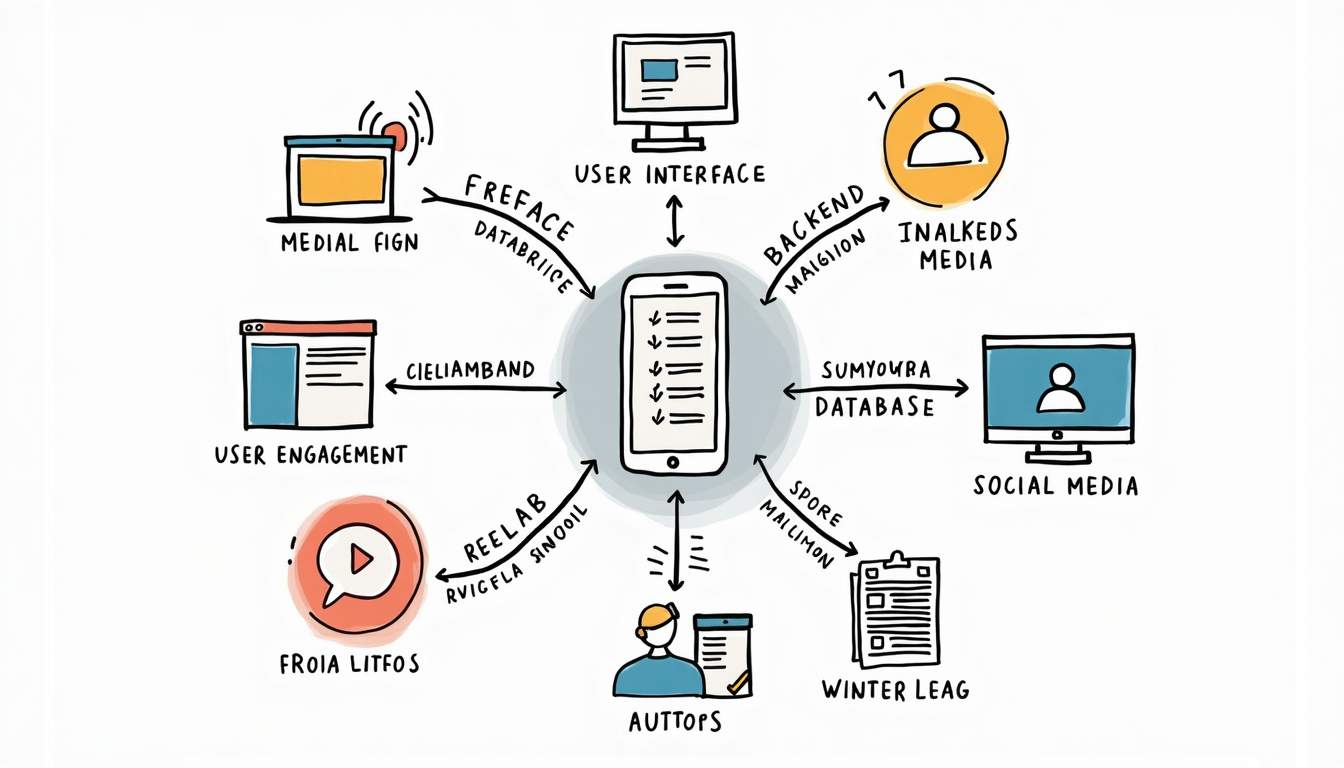Launching a social media app today is one of the most exciting opportunities for startups, but also one of the most challenging. With billions of people scrolling, liking, and sharing every day on Instagram, TikTok, Facebook, and Twitter, the appetite for new platforms remains strong.
Yet one question dominates founder conversations:
How much does it actually cost to build a social media app?
The answer varies dramatically depending on scope, features, and team. In this guide, we’ll break down the cost drivers, realistic price ranges, case studies, and strategies to help you build wisely, without draining your budget.
Core Components of a Social Media App
Every social app, no matter how niche or broad, rests on a few core building blocks:
- User registration and profiles – secure onboarding, identity protection, and customization.
- Content creation and sharing – text, photo, video, live streams.
- Social interactions – likes, comments, shares, private messaging.
- Content feed – personalized algorithms keep users engaged.
- Search and discovery – friends, hashtags, groups, trending posts.
- Admin tools – moderation dashboards, user management, analytics.
Even these “basic” features require significant backend infrastructure and careful UX design to handle scale.
Advanced Features That Increase Cost
To stand out, many apps add next-gen functionality:
- Real-time messaging with media support
- AI-powered recommendations and moderation
- High-quality video and live streaming
- Augmented reality filters and effects
- Monetization systems (ads, in-app purchases, subscriptions)
Each of these raises both the initial development cost and ongoing maintenance. Snapchat’s AR filters, for example, required heavy investment in graphics processing and optimization, while TikTok spends millions refining its recommendation engine.
Factors Influencing Social Media App Development Cost
App Complexity
An MVP with profiles, posting, and messaging might take 3–6 months to build and cost around $100,000–$150,000. A fully featured platform with live video, algorithms, and AR can push past $500,000.
Platform Choice
- Single platform (iOS or Android) is cheaper but limits audience.
- Native apps (built separately for each OS) deliver the best performance but double costs.
- Cross-platform frameworks like Flutter or React Native cut costs by 30–40%, though advanced features sometimes work better natively.
Design and UX
Social apps live and die by user experience. Investing in polished design, animations, and accessibility can add $20,000–$50,000+ but dramatically improves retention.
Backend Infrastructure
Handling millions of posts, likes, and messages requires scalable backend architecture. Cloud providers like AWS, Azure, or Google Cloud keep things running but come with recurring costs tied to storage and bandwidth.
Development Team Location
Rates vary widely:
- North America / Western Europe: $100–$250/hour
- Eastern Europe: $40–$100/hour
- Asia: $20–$75/hour
The right mix of cost and expertise often defines the budget.
Ongoing Maintenance
Expect annual costs of 15–20% of your initial budget for bug fixes, updates, and scaling.

Typical Social Media App Development Cost Breakdown
Instead of a table, here’s the cost landscape in prose form:
- Planning & Research: $5,000–$15,000
- UI/UX Design: $10,000–$50,000 depending on complexity
- Frontend Development: $30,000–$150,000 (iOS, Android, or cross-platform)
- Backend Development: $40,000–$200,000 for servers, APIs, databases
- Testing & QA: $10,000–$40,000
- Deployment: $2,000–$10,000
- Maintenance: $10,000–$50,000 annually
Total range: roughly $100,000 to $500,000+, depending on scope and scale.
Real-World Case Studies
- Instagram: Launched in 2010 as a lean photo app. Development reportedly cost the equivalent of ~$500,000 today with a small team over 8 weeks. Scaling features like Stories and Reels drove costs into the millions.
- Snapchat: Its early ephemeral messaging app cost $300,000–$400,000 to build, before AR filters and video features demanded major reinvestment.
- Clubhouse: The audio-based app reportedly spent $10 million in its first year, mostly on backend streaming infrastructure and server costs.
- TikTok: An outlier, with parent company ByteDance investing hundreds of millions into recommendation algorithms, video processing, and global infrastructure.
These examples show that while a lean MVP can be built on a startup budget, scaling to millions of users quickly requires substantial capital.
How Startups Can Optimize Costs
- Build an MVP first: Launch with core features, test demand, and iterate.
- Cross-platform frameworks: Use Flutter or React Native for simultaneous iOS/Android development.
- Leverage APIs: Firebase for authentication, Twilio for messaging, Stripe for payments.
- Outsource smartly: Offshore teams cut hourly rates but require strong project management.
- Plan monetization early: Ads, subscriptions, or marketplace features can fund ongoing development.
De-Risking Development with Wednesday Solutions
Social media apps are notoriously high-risk. Many startups burn cash on features nobody uses — or worse, scale too quickly on fragile infrastructure.
That’s where Wednesday Solutions’ Launch Program comes in. Through Sprint Zero, a 4-week engagement, you get:
- A product roadmap aligned to your unique idea
- Scalable technical architecture
- A design style guide for consistency
- A functional prototype or freemium tool to start real-world testing
It’s fixed-price, zero-risk, and comes with a money-back guarantee if deliverables don’t meet expectations. Combined with AI-driven engineering sprints and an offshore model, this approach gives startups more iterations for the same budget — critical in fast-moving markets like social media.
Is Building a Social Media App Worth It?
Building a social media app is expensive and complex, with costs ranging from $100,000 for an MVP to $500,000+ for full-scale platforms.
The key to success lies in:
- Starting small, validating quickly
- Investing in design and scalability
- Choosing the right tech and team
- Planning monetization and growth from day one
The social media market is competitive but far from saturated. Niche apps with unique value propositions — whether audio-based, video-first, or community-driven — can still capture loyal audiences. With the right strategy and smart budgeting, your startup can carve its place in this dynamic space.






